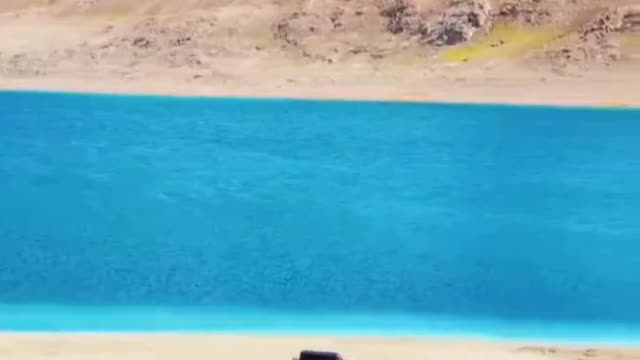Premium Only Content

Qinghai-Tibet Plateau
Qingzang Gaoyuan) is a vast, elevated plateau in Central Asia[1][2][3][4] covering most of the Tibet Autonomous Region and Qinghai Province in China and Ladakh in Kashmir, India. It occupies an area of around 1,000 by 2,500 kilometers, and has an average elevation of over 4,500 meters. Sometimes called "the roof of the world," it is the highest and biggest plateau, with an area of 2.5 million square kilometers (about four times the size of Texas or France).[5]
The plateau is bordered to the northwest by the Kunlun Range which separates it from the Tarim Basin, and to the northeast by the Qilian Range which separates the plateau from the Hexi Corridor and Gobi Desert. Near the south the plateau is transected by the Yarlung Tsangpo River valley which flows along the base of the Himalayas, and by the vast Indo-Gangetic Plain. To the east and southeast the plateau gives way to the forested gorge and ridge geography of the mountainous headwaters of the Salween, Mekong, and Yangtze rivers in western Sichuan and southwest Qinghai. In the west it is embraced by the curve of the rugged Karakoram range of northern Kashmir.
It has been empirically shown to be the most remote place on Earth.[7]
The Tibetan plateau has been an important strategic area throughout Chinese history.
NASA satellite image of the southern area of Tibetan PlateauThe plateau is a high-altitude arid steppe interspersed with mountain ranges and large brackish lakes. Annual precipitation ranges from 100 mm to 300 mm and falls mainly as hailstorms. The southern and eastern edges of the steppe have grasslands which can sustainably support populations of nomadic herdsmen, although frost occurs for six months of the year. Permafrost occurs over extensive parts of the plateau. Proceeding to the north and northwest, the plateau becomes progressively higher, colder and drier, until reaching the remote Changthang region in the northwestern part of the plateau. Here the average altitude exceeds 5,000 meters (16,500 feet) and year-round temperatures average −4 °C, dipping to −40 °C in winter. As a result of this extremely inhospitable environment, the Changthang region (together with the adjoining Kekexili region) is the least populated region in Asia, and the third least populated area in the world after Antarctica and northern Greenland.
-
 25:04
25:04
CoachTY
1 day ago $2.49 earnedHOW TO DO YOUR OWN RESEARCH IN CRYPTO
10.1K3 -
 1:30:04
1:30:04
Steve-O's Wild Ride! Podcast
2 days ago $3.29 earnedHardy Is Taking Over Country Music - Wild Ride #246
19.5K2 -
![🔴LIVE-MARVEL RIVALS [1ST LOOK]❗ #MGGA #RUMBLEGAMING #RUMBLETAKEOVER](https://1a-1791.com/video/s8/1/f/N/y/K/fNyKv.0kob-small-LIVE-MARVEL-RIVALS-1ST-LOOK.jpg) DVR
DVR
Fragniac
13 hours ago🔴LIVE-MARVEL RIVALS [1ST LOOK]❗ #MGGA #RUMBLEGAMING #RUMBLETAKEOVER
12.5K2 -
 9:20
9:20
Colion Noir
16 hours agoArgentine President Lowers Gun Purchase Age to 18, Why The U.S. Should Do The Same
27.2K30 -
 1:49:07
1:49:07
Adam Does Movies
16 hours ago $0.45 earnedKraven Movie Review + The Lord of the Rings: The War of the Rohirrim - LIVE!
11.3K -
 21:59
21:59
BlackDiamondGunsandGear
10 hours ago $0.44 earned🔴 NEW Ruger RXM / RANGE Review / Gluger?
7.29K5 -
 1:33:50
1:33:50
Squaring The Circle, A Randall Carlson Podcast
1 day ago#031 Apocalypse Unsealed - Squaring The Circle: A Randall Carlson Podcast
7.59K4 -
 1:01:47
1:01:47
Trumpet Daily
2 days ago $7.48 earnedChris Wray Lied About January 6 - Trumpet Daily | Dec. 13, 2024
9.68K12 -
 55:42
55:42
Bek Lover Podcast
12 hours agoDemonic Deception Incoming!
3.96K4 -
 37:13
37:13
TampaAerialMedia
1 day ago $0.16 earnedBOSTON Travel Guide - Tours, Tips, Trails, & Transportation
3.29K1